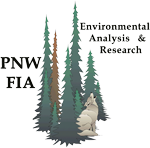California Energy Commission Project
Assessing the Sustainability of Forest Biomass Utilization in California
The overarching goal of the larger California Energy Commission project of which the BioSum component was one approach is integrate the utilization of forest biomass for transportation fuels with other forest management policy goals. California's biomass resources have the potential to serve as feedstock for alternative low-carbon transportation fuels. A key policy concern is to determine the appropriate volumes, locations and methods for procuring these resources in a sustainable manner. Concurrently, state and federal forest managers have identified the need to reduce fire risk and restore forest health and resilience through a variety of thinning and other fuel treatments strategies. Such forest treatments could help California’s forests to be more resilient to increasing climate change, and sustain its role in carbon sequestration. Both treatments and non-treatments must also be assessed for their ecological and environmental impact on both treated and untreated stands, with and without wildfire.
For this project, a California statewide BioSum 5.0 model was developed. It is suitable for conducting project-scale economic and policy analysis on management options for fuels and forest management under a range of economic, policy, and fire hazard scenarios. BioSum 5.0 integrates information on forest stands, vegetation treatments, surface fuel models, transportation networks, activity costs, and product revenues to produce economic and biological estimates of the outputs from different biomass-generating forest management scenarios. Using the full statewide dataset of FIA plots in forest areas, the model assesses a range of silvicultural prescriptions designed to achieve different forest productivity, ecological characteristics (using trees of different sizes and species as proxies for desired wildlife habitats), and fire risk reduction metrics.
The results of the Biosum 5.0 analysis provide a tree-list based simulation over 40 years for all of California’s public and private timberlands. The resulting comparisons provide a wealth of ecological and economic outputs to effectively assess sustainability over a long enough period. This tool has significant advantages over case study approaches that model a small subset of forest conditions and simulation models that are not calibrated to actual forest stand and conditions and empirical growth estimates.
Downloadable Data
Database containin the California FIA plot data used in analysis.
----> Download Access database here (FIADB_CA_2014.zip, 77.4 MB)
Transportation grid layer for the Sierra region of California.
----> Download geodatabase here (SierraRoadGrid.zip, 18.3 MB)

